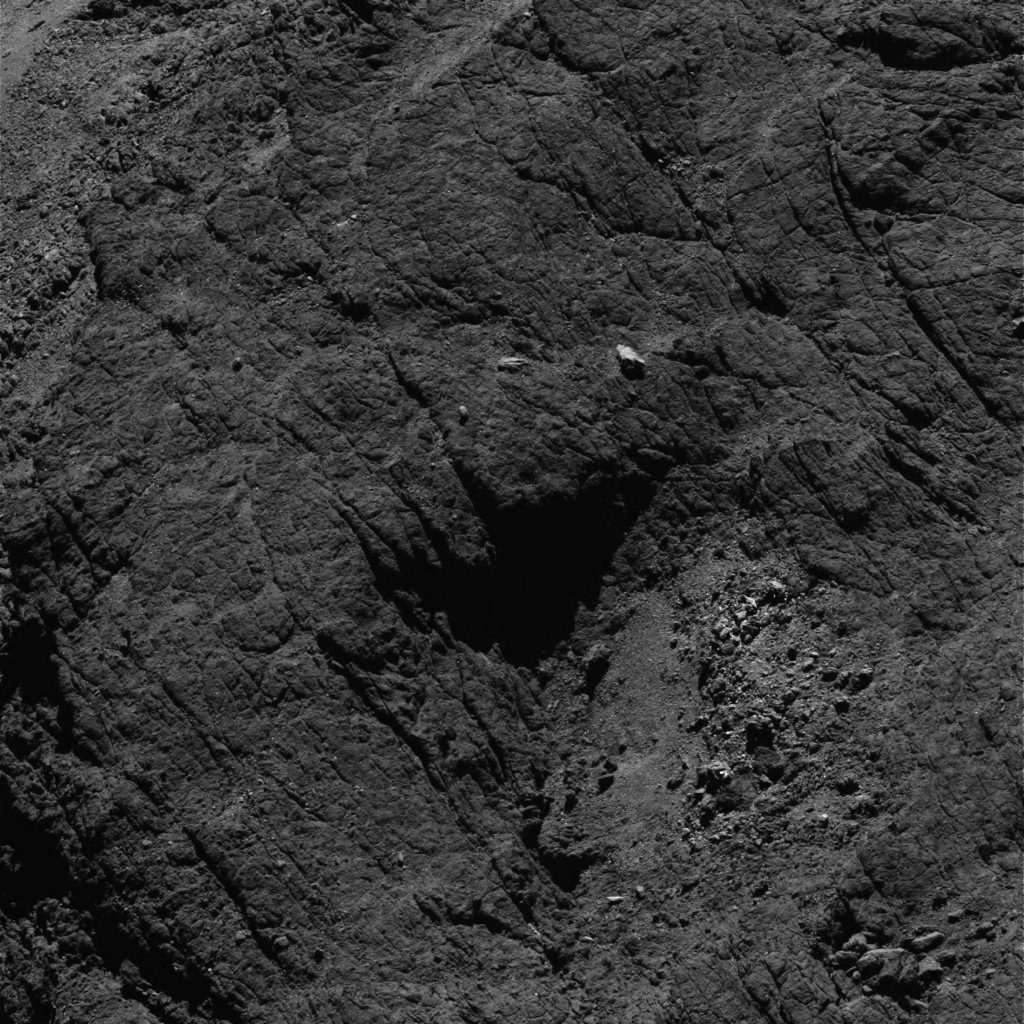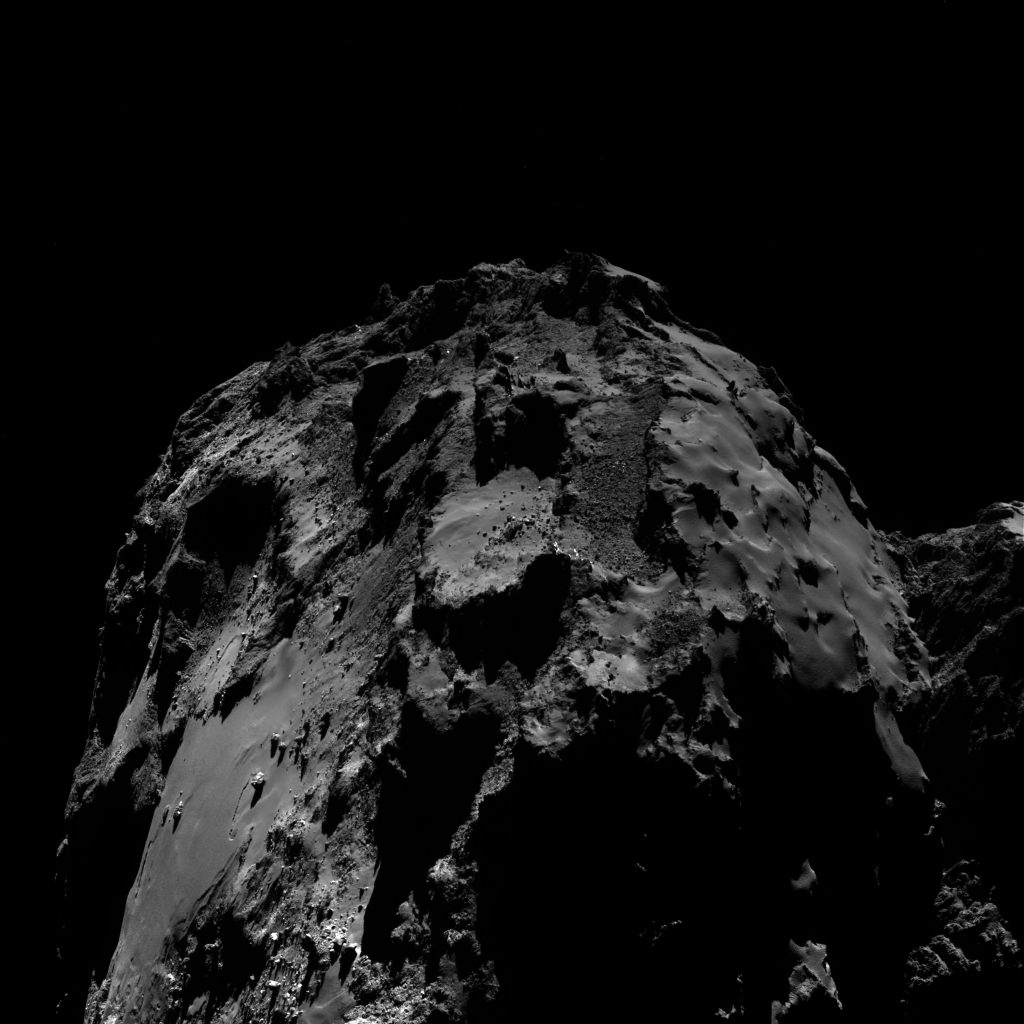CometWatch – early August round-up
The NAVCAM image, taken from a distance of about 10.6 km from Comet 67P/Churyumov-Gerasimenko on 8 August, shows a spectacular close-up of details close to the boundary of Atum (foreground and left) and Anubis (the smoother region towards the top).
To the left, the scene shows exposed layers with smoother material lying in between, which transitions into a heavily eroded zone before taking on a smoother appearance again in the centre, albeit scarred with fracture-like features cross-cutting at a range of scales. Layers can also be picked out towards the top right, some of which have the appearance of being folded, as seen in other images of the Anubis region.
The OSIRIS team have also shared a number of new views via their image of the day website.
OSIRIS narrow-angle camera image taken on 3 August 2016, when Rosetta was 8.7 km from the centre of Comet 67P/Churyumov–Gerasimenko. The scale is 0.15 m/pixel at the comet and the image measures about 307 m. Credit: ESA/Rosetta/MPS for OSIRIS Team MPS/UPD/LAM/IAA/SSO/INTA/UPM/DASP/IDA
An image captured on 3 August (above) shows a striking contrast between very smooth plains, highly fractured outcrops, and a boulder strewn surface – all within a ~300 x 300 m square region in Seth.
OSIRIS narrow-angle camera image taken on 6 August 2016, when Rosetta was 8.7 km from the centre of Comet 67P/Churyumov–Gerasimenko. The scale is 0.15 m/pixel at the comet and the image measures about 307 m. Credit: ESA/Rosetta/MPS for OSIRIS Team MPS/UPD/LAM/IAA/SSO/INTA/UPM/DASP/IDA
Meanwhile an image captured on 6 August (above) – the two year anniversary of Rosetta arriving at the comet – shows a heavily fractured region in Bastet, on the comet’s small lobe. A relatively smoother patch, home to an array of boulders, sits within the fractured terrain.
Finally, a great view over the large lobe was captured by Rosetta’s OSIRIS wide-angle camera on 10 August (below). It really shows off the curvature of the comet, and the contrasting terrains of Imhotep (left), Khepry and Aten (top/middle) and Ash (right).
OSIRIS wide-angle camera image taken on 10 August 2016, when Rosetta was 12.8 km from the centre of Comet 67P/Churyumov–Gerasimenko. The scale is 1.18 m/pixel at the comet and the image measures about 2.4 km. Credits: ESA/Rosetta/MPS for OSIRIS Team MPS/UPD/LAM/IAA/SSO/INTA/UPM/DASP/IDA
And in case you missed it…don’t forget our two-year anniversary NAVCAM image here!



